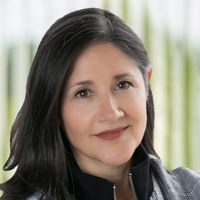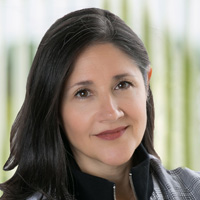Better Than a Charity? 10 Things You Can Do by Starting Your Own Foundation
Budding philanthropists can gain more freedom to get things done and help others by starting their own private foundation, rather than working through an established charity.


In 2008, I traveled to Pokuase, Ghana, to volunteer with WomensTrust, a nonprofit organization focused on empowering women through microenterprise, education and health care. It was a pretty amazing experience on many levels. While I was there, the WomensTrust founder shared an intriguing idea I have since heard often: A fulfilling life is lived in thirds.
- The first third is dedicated to learning.
- The second third is focused on earning.
- And the last third is spent returning to others the knowledge and wealth gathered during the prior two stages.
If you are at or nearing the return stage in life, you might be considering how to increase your charitable giving. And if you’d like to use a full set of tools to achieve your goals, then establishing a private foundation (also called a family foundation) might be right for you.
Besides offering a high degree of control and flexibility, U.S.-based private foundations have wide latitude to undertake innovative and effective philanthropy. Here are 10 exciting things you can do with a foundation that are virtually impossible to achieve with other charitable vehicles:
From just $107.88 $24.99 for Kiplinger Personal Finance
Become a smarter, better informed investor. Subscribe from just $107.88 $24.99, plus get up to 4 Special Issues

Sign up for Kiplinger’s Free Newsletters
Profit and prosper with the best of expert advice on investing, taxes, retirement, personal finance and more - straight to your e-mail.
Profit and prosper with the best of expert advice - straight to your e-mail.
Grant to Individuals
Private foundations are uniquely permitted to provide funds directly to individuals for emergency relief or hardship assistance in circumstances such as loss of employment, illness and temporary displacement. Whereas granting to a nonprofit is one type of experience – and the one most closely associated with charitable giving – directly supporting a family touched by tragedy can provide a profound, personal dimension to your giving.
Conduct Direct Charitable Activities
A foundation can conduct its own charitable programs directly, instead of through a public charity, without setting up a separate nonprofit or converting to an operating foundation. Direct charitable activities (DCAs) are programs that permit foundations to fund and carry out their own projects directly.
This brand of “hands-dirty” philanthropy suits those who want to contribute both financial and human capital to their good works. For these donors, it’s not about finding charities worthy of donations; it’s about solving a problem using their connections, capabilities and capital to produce results that grant dollars alone wouldn’t buy.
Provide Program-Related Investment Loans (PRI Loans)
Besides making grants, a foundation can make no-interest or low-interest loans to charitable organizations and use the proceeds from the repayment of that loan to make other programmatic investments. And just like grants, PRI loans count toward the foundation’s 5% minimum distribution requirement. This type of giving may offer the charitable organization the dual benefit of improving its creditworthiness if the loans are repaid in full.
Give Program-Related Loan Guarantees
Loan guarantees are another way to provide charitable support — often without spending a dime. This entails arranging a loan guarantee between a foundation and financial institution for a charitable organization, allowing the latter to finance an activity (such as expansion, hiring or inventory) on more favorable terms than they might otherwise receive.
Make Program-Related Equity Investments
Few donors realize that they can make equity investments in for-profit commercial ventures for charitable purposes (e.g., the Bill & Melinda Gates Foundation’s 2011 investment in Liquidia Technologies to accelerate the development of vaccines) out of the foundation’s grantmaking budget and have it count toward the 5% minimum distribution requirement.
Donate Internationally
Making grants outside the United States holds great appeal for donors with family ties to other nations and philanthropic goals that cross political borders. Private foundations may grant directly to overseas charitable organizations, even when there is no IRS-recognized 501(c)(3) entity to serve as an intermediary.
For example, some foreign charities are automatically recognized by the IRS because of their special status (e.g., the United Nations); others have set up a U.S.-based “friends of” organization that is a recognized 501(c)(3) public charity that may accept funds on their behalf. But when there’s no easy route to channel funds to a favorite organization overseas, foundations may still make a grant by providing additional oversight, either by finding the organization to be “equivalent” to a U.S. public charity or by exercising ��expenditure responsibility.”
Give Awards and Prizes to Spur Progress
One effective method of driving innovation and creating buzz around one’s field of interest is to offer a prize. Traditionally, awards were given as a way of rewarding past performance (e.g., the Nobel Prize), but modern foundations are using prizes to drive future progress. Prize-based philanthropy spurs innovation by enabling donors to leverage the creativity of many people to innovate or solve a problem without having to support each person individually.
Pay Programmatic Expenses
Most donors want as much money as possible to go to their favorite charitable causes. But to make the best use of your charitable dollars, sometimes you need to spend money in order to save it. For example, the IRS recognizes that research and education to inform your philanthropy is vital and considers such research a legitimate expense. By undertaking research before putting dollars out the door, your foundation members will better understand the problem they’ve chosen to work on, learn who else is working on it, and surface multiple potential solutions.
Other allowable expenses for a private foundation include board meetings and site visits to explore and understand the work of potential grantees and conferences or seminars in the foundation’s areas of interest. As many foundations discover, these kinds of expenditures are often a wise investment of limited philanthropic dollars because they uncover new opportunities while preventing money from being wasted on “re-inventing the wheel.”
Make Set-Asides
As long as they meet certain requirements and obtain advance approval, the IRS allows private foundations to set aside funds in order to build up the reserves necessary for an ambitious future project. For example, if a foundation wants to undertake a large initiative (e.g., the construction of a building), the foundation could apply to the IRS for permission to set aside funds every year over five years that may be counted toward satisfying its minimum distribution requirement.
Undertake Impact Investments
There used to be a firewall between a foundation’s investments and its grantmaking, but a recent trend, impact investing, aligns a foundation’s financial investments to its mission (e.g., affordable housing, renewable energy) while maintaining financial returns. Impact investment opportunities are arrayed across a full spectrum of risk. Whether a foundation has $250,000 or $500 million, it is in a unique position to use all of its assets — not just funds from the grantmaking budgets — to advance its philanthropic missions.
Opportunities for innovative philanthropy are nearly endless with a foundation. No other charitable giving vehicle offers the same degree of flexibility. Plus, the process of starting a foundation is far less time-consuming and expensive than many believe. With proper support and guidance, one can be established within a week and the benefits will last a lifetime.
Profit and prosper with the best of Kiplinger's advice on investing, taxes, retirement, personal finance and much more. Delivered daily. Enter your email in the box and click Sign Me Up.

Hannah Shaw Grove is the chief marketing officer of Foundation Source, founder of "Private Wealth" magazine and author of 11 data-based books and hundreds of reports and articles on topics relating to the creation, management, disposition and transfer of wealth. Hannah has previously been the chief marketing officer at Apex Clearing, iCapital Network and Merrill Lynch Investment Managers and is a cum laude graduate of Harvard University. She holds the FINRA Series 6, 7, 24, 26 and 63 licenses.
-
 Santa Claus Rally at Risk as Tech Stocks Slump: Stock Market Today
Santa Claus Rally at Risk as Tech Stocks Slump: Stock Market TodayThe Nasdaq Composite and Dow Jones Industrial Average led today's declines as investors took profits on high-flying tech stocks.
-
 7 Ways to Save Money on Almost Everything
7 Ways to Save Money on Almost EverythingHigh prices got you down? These strategies can help you reap deep discounts on everyday spending.
-
 My Top 10 Stock Picks for 2026
My Top 10 Stock Picks for 2026Each year, we ask an expert to pick 10 stocks that have the potential to beat the market over the next 12 months. Here are his choices for 2026.
-
 Now That You've Built Your Estate Planning Playbook, It's Time to Put It to Work
Now That You've Built Your Estate Planning Playbook, It's Time to Put It to WorkYou need to share details with your family (including passwords and document locations) and stay focused on keeping your plan up to date.
-
 I'm a Wealth Adviser: These 10 Strategies Can Help Women Prepare for Their Impending Financial Power
I'm a Wealth Adviser: These 10 Strategies Can Help Women Prepare for Their Impending Financial PowerAs women gain wealth and influence, being proactive about financial planning is essential to address longevity and close gaps in confidence and caregiving.
-
 I'm a Financial Planning Pro: This Is How You Can Stop These 5 Risks From Wrecking Your Retirement
I'm a Financial Planning Pro: This Is How You Can Stop These 5 Risks From Wrecking Your RetirementYour retirement could be jeopardized if you ignore the risks you'll face later in life. From inflation to market volatility, here's what to prepare for.
-
 Are You Hesitating to Spend Money You've Spent Years Saving? Here's How to Get Over It, From a Financial Adviser
Are You Hesitating to Spend Money You've Spent Years Saving? Here's How to Get Over It, From a Financial AdviserEven when your financial plan says you're ready for a big move, it's normal to hesitate — but haven't you earned the right to trust your plan (and yourself)?
-
 Time to Close the Books on 2025: Don't Start the New Year Without First Making These Money Moves
Time to Close the Books on 2025: Don't Start the New Year Without First Making These Money MovesAs 2025 draws to a close, take time to review your finances, maximize tax efficiency and align your goals for 2026 with the changing financial landscape.
-
 Is Fear Blocking Your Desire to Retire Abroad? What to Know to Turn Fear Into Freedom
Is Fear Blocking Your Desire to Retire Abroad? What to Know to Turn Fear Into FreedomCareful planning encompassing location, income, health care and visa paperwork can make it all manageable. A financial planner lays it all out.
-
 How to Master the Retirement Income Trinity: Cash Flow, Longevity Risk and Tax Efficiency
How to Master the Retirement Income Trinity: Cash Flow, Longevity Risk and Tax EfficiencyRetirement income planning is essential for your peace of mind — it can help you maintain your lifestyle and ease your worries that you'll run out of money.
-
 I'm an Insurance Expert: Sure, There's Always Tomorrow to Report Your Claim, But Procrastination Could Cost You
I'm an Insurance Expert: Sure, There's Always Tomorrow to Report Your Claim, But Procrastination Could Cost YouThe longer you wait to file an insurance claim, the bigger the problem could get — and the more leverage you're giving your insurer to deny it.